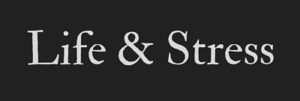Modern science confirms Eastern techniques.…
In the medical community there’s a lot of skepticism for Eastern medicine methods. More recently though certain treatments are starting to gain more respect – particularly when the outcomes are noticeably positive and easy to measure.
This takes the guess work out of certain which treatments work or not, and gives you signposts for the techniques you can learn to naturally reduce your stress.
Self-administered Acupressure shown to relieve Stress.
South Korean scientists, in this 2011 study, analyzed the results of 10 studies from multiple countries including Japan, Korea and China. The results? In all 10 studies, Acupressure was found to be a Successful and Safe method for reducing Stress, Anxiety and Chronic Fatigue.
More evidence…
Another Korean study showed significant reduction in blood Cortisol levels (your main Stress hormone) through using Acupressure techniques.
Modern medicine has huge benefits and if I get hit by a car, then I want to be brought to a modern hospital. But pharma companies are always quick to sell you a patented solution to help ease your stress when realistically, natural methods are also effective and have none of the negative side effects.
How can you learn to reduce stress using acupressure?
The 4 point Acupressure Stress release routine takes 9 minutes to complete. Once you know the routine it’s simple to use and you’ll be able to do it automatically in no time.
Follow these 3 basic rules
- Apply a moderate pressure on each point. There’s no need to press too really hard, but you want some noticeable pressure.
- Breathe in a slow, controlled and deliberate manner. Usually 3 seconds in, 3 seconds out. This will improve the effect of the release and acts as another proven method of stress reduction.
- Use this system twice per day (morning and evening should work well). You can add more sessions in if you’re inclined. There’s no upper limit.
The 4 Acupressure points.
- Back of Neck.
Have you ever experienced stress or anxiety then notice that you grasp the back of your neck? Acupressure specialists consider this a normal and natural reaction because it’s one of the main release points for tension when massaged correctly.
Located: 1.5” below the base of your head and .5” out from either side of your spine.
Technique:
– Use your Index and middle fingers of both hands, on both sides of the neck. This will cover a big enough coverage to hit the point.
– Close your eyes and Gently massage your neck in circles rotating inwards towards your spine.
– focus on breathing slowly, relaxed and deeply to enhance the effect.
Time: 3 minutes.
- Your Temples (name)
One of the most common points for feeling stress in your body, you can reduce any pounding tension by applying pressure on the center of each temple.
Picture
Located: Using your Index fingers, locate the center of your temple. It’ll be about 1/2-1” away from the edge of your eyebrows, you’ll feel a slight dip in your bone.
Technique:
– Close your eyes and press these points
– Like pushing a button, Feel the stress being released as you apply the pressure. Breathe consistently.
Time: Hold for 2 minutes
- Sternum/Ribcage.
This is a common point for helping with shortness of breath sensations and tension brought on by stress. You may even be slightly tender when you press this area. If so, this will help you release a lot of tension.
Located: 3 fingers lengths up from the base of your ribcage.
Method: Press with both hands using your first 3 fingers (index, middle, 3rd).
Time: hold for 2 minutes.
- The Base of your instep – LV3.
LV3 can treat a large range of conditions. It’s a point that affects the Liver, a cleansing organ, so it’s not surprising that we can use LV3 to improve our body’s ability to process the effects of stress by improving Liver function.
Locate:
- Using your index fingers to locate the LV3. It’s about 1” up from your big to the left, in the recess between your bones.
Method: Press with your index finger (pointer) on both feet at the same time, applying a moderate pressure and focusing on the sensation.
Time: 2 minutes.
Track your progress…
Test out the routine to get used to it. Then apply twice daily for 2 weeks. Be consistent, it’s also worth keeping a record of your stress levels at the beginning and end of the day on a calender. Each day, give yourself a score out of 100 for general stress levels.
Once 2 weeks have been completed you’ll have established the routine. Don’t forget to report your results!
Do you know of any other points that work you? We’d love to hear your ideas.
References…
- Song et al, Complement Ther Med.2015 Feb;23(1):68-78. doi: 10.1016/j.ctim.2014.11.002. Epub 2014 Dec 4
- Shin, W. J Exerc Rehabil.2013 Apr;9(2):331-5. doi: 10.12965/jer.130019. Epub 2013 Apr 25.













